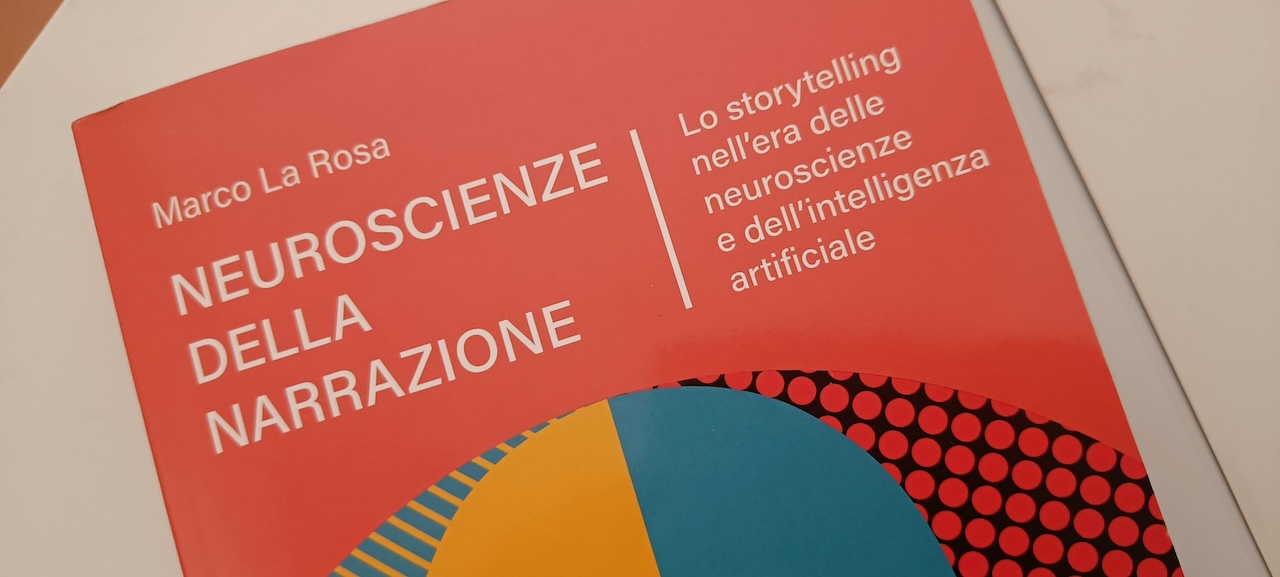Marco La Rosa is a science communicator who has written a book entitled Neuroscience of Narration with the subtitle Storytelling in the Age of Neuroscience and Artificial Intelligence (published by Hoepli, 255 pages, 24.90 euros).
The book is an in-depth essay on the meaning of stories, on how they are written, read, interpreted, on how the perception of the writer and the reader are intertwined. It opens with an analysis of the way in which the mind works, the role of sensory perceptions and emotions, as well as that of learning and analytical skills, it introduces the concept of narratology which is precisely the basis of the study of stories and how they are built and developed.
La Rosa takes a further step by talking about cognitive narratology, which is the application of scientific information to the role that narration has, to the specific relationship that is established between the individual reader and the story, to the fact that storytelling becomes a tool for reasoning, with a real impact on the knowledge and perception of reality, and it is not just written narration but embraces every context and every communicative media.
Each of us, says the author, is the fruit not only of our genes but also of our culture and our knowledge, and emphasizes how the application of scientific techniques to the analysis of the perception of the story can be traced back to what has been defined as literary Darwinism. Neuronarratology leads back to empirical and scientific analysis, although not yet fully decoded, the ability of a story, of storytelling, to involve the reader not only on the level of intellect but also on that of emotions to understand as much as possible what are the dynamics that generate the involvement and therefore the success of a story, be it a book or a commercial (and here the mind goes to Vance Packard, a journalist and critic of sociology who wrote, as early as 1957, a book that in Italian took the title of Occult Persuaders, in which he already described techniques of manipulation of the message that appealed to the human subconscious, techniques whose application was then prevented).
Precisely to warn the reader, La Rosa addresses the issue by emphasizing how, on the one hand, it is appropriate to be careful and not to confuse the application of scientific principles with that of trends that are proposed as the result of research but are not (neuropop) and, on the other hand, looks at the actual impact it has Artificial intelligence (at present) underlining how its use, which in certain contexts can be effective, is not yet able to replace the creative work of writers, journalists or content creators because it is the victim of a conformist flattening which makes it impossible, now, for him to be able to attain the capacities of the human mind. That said, it does not exclude that we will soon start finding content where it will be specified whether it is written by artificial intelligence or born from the human mind.
Applying theories
Once the scenario has been analysed, the author takes action by deepening the ways in which the scientific approach to storytelling is applied, he also does so through a series of interviews expertly inserted in the main text with Pierguido Iezzi, cybersecurity expert, Paolo Cattaneo, university professor and musicologist, Alberto Casadei, full professor of Italian literature at the University of Pisa, Mario Furlan, founder of the City Angels, Paolo Borzacchiello, an expert in linguistic intelligence, and Luisella Battaglia, founder and director of the Italian Institute of Bioethics.
This is where dopamine, the hippocampus and the importance of the narrative tool of metaphors come into play, which the author considers very important, as well as the narrative structure that is no longer the search for an ideal context but tends to build a thread of the story that passes from negative to positive moments, thus creating involvement and emotion in the reader. This is done by applying very precise narrative techniques, think of the twists or moments of suspense that we experience when we watch a film, for example, or the experience we live when we look at a work of art, an experience that, if scientifically detected, shows how the dynamics of attention and attraction are very different if it is a classic work, For example, a painting depicting people, or an abstract work. Of course, the set of this knowledge, the author recalls, can also be used on the one hand to exploit the power of storytelling in clinical contexts and on the other hand used in order to create manipulative communication by exploiting, for example, cognitive biases, and generating what are now known as fake news.
The book represents an effective and complete tool to learn about the dynamics, techniques, potential of communication in its various forms, of storytelling in its declinations and with its ability to be applied to communication of all kinds and for every possible purpose.
ALL RIGHTS RESERVED ©
